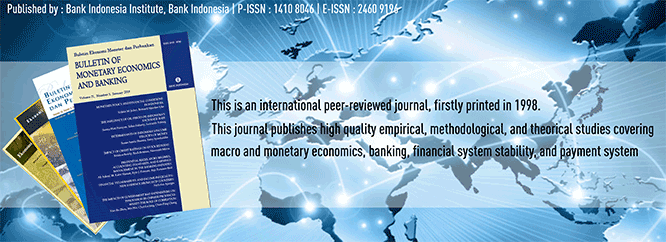
Document Type
Article
Abstract
This paper reviews the inter-linkage between banking stability and monetary policy, with a reference to the Indonesian case since the 1997 crisis. In particular, it shows how monetary transmission mechanism would be inhibited and thus monetary policy would not be effective when the banking system is not sound and stable, such as during a crisis period. Conversely, the stance and response of monetary policy would have significant impacts on banking stability as inflation, exchange rate, and interest rate constitute major market risks to banking operations. For Indonesia, a close inter-linkage between banking instability and monetary policy ineffectiveness has been vividly evidenced during the crisis period of 1997 – 1999. Subsequently, however, with progress of the banking restructuring programs that Indonesia authorities have undertaken, the banking conditions have imporved considerably since 2000. As banking intermediation improved, not only has financing to economic growth increased but also monetary transmission mechanisms strengthened considerably. Nonetheless, excess liquidity that banking system is still experiencing, especially because of lack of feasible investment outlests in the real sector and high perceived credit risks from the bankers, poses serious challenges to the central bank for better coordination and striking the optimal balance between maintaining monetary and banking stability while continue to promoting economic growth.Keyword: banking stability, monetary policy, IndonesiaJEL : G21, E52, N25
Recommended Citation
Warjiyo, Perry
(2006)
"STABILITAS SISTEM PERBANKAN DAN KEBIJAKAN MONETER : KETERKAITAN DAN PERKEMBANGANNYA DI INDONESIA,"
Bulletin of Monetary Economics and Banking: Vol. 8:
No.
4, Article 5.
DOI: https://doi.org/10.21098/bemp.v8i4.144
Available at:
https://bulletin.bmeb-bi.org/bmeb/vol8/iss4/5
First Page
429
Last Page
454
Creative Commons License

This work is licensed under a Creative Commons Attribution-NonCommercial 4.0 International License
Country
Indonesia
Affiliation
Bank Indonesia







